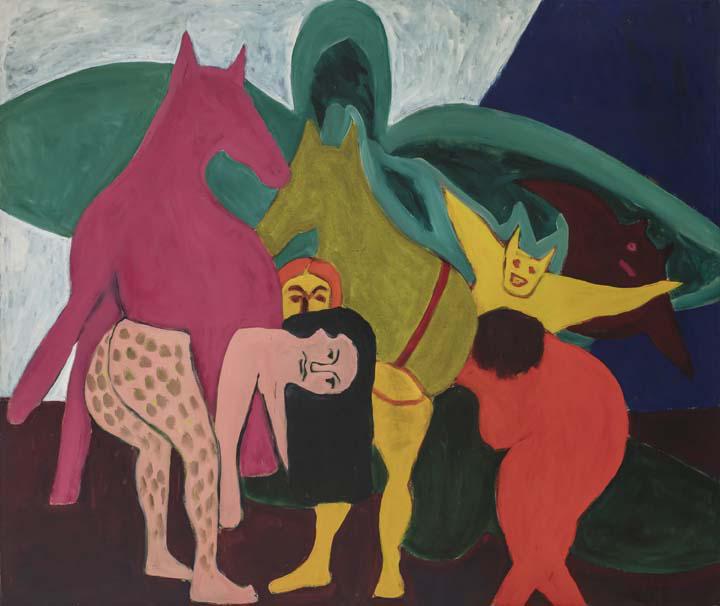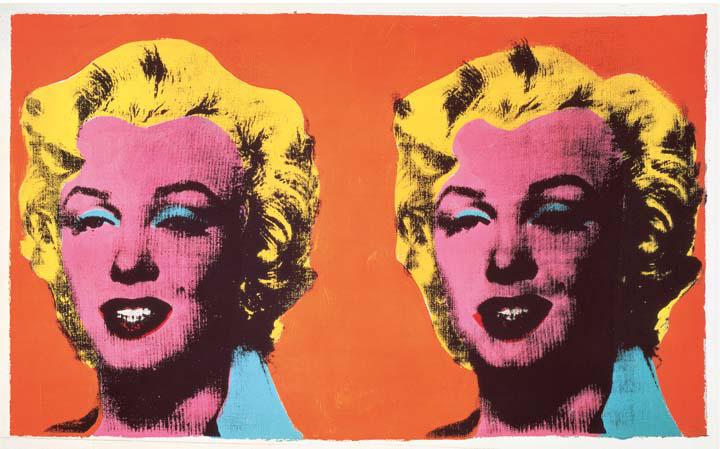New York: 1962-1964 at The Jewish
Q: Where did the legendary gallerist Leo Castelli discover Jasper Johns?
Q: Where did Robert Rauschenberg have his mid-career retrospective, at age 39?
Q: Where did the following artists have their first solo museum exhibitions: Kenneth Noland (1965), Larry Rivers (1965), Jean Tinguely (1965), Ad Reinhardt (1966) and Yves Klein (1967)?
If you have been a New York City art afficionado for fifty years, you will know that the Jewish Museum is the correct answer to all three questions. If not, you will be enthralled by the story of how this offspring of the Jewish Theological Seminary, housed in a mansion on the upper east side, adjacent to the Cooper Hewitt and a stone’s throw from the Guggenheim, served as the epicenter of “The New Art” for a formative decade. And how New York City became the global cultural hub for contemporary art. Above: Installation view of Recent American Sculpture (1964) at the Jewish Museum, NY. Artworks ©Lee Bontecou (on the walls) and © Mark Di Suvero (sculpture in the middle); courtesy the Jewish Museum.

On July 22, The Jewish, as it has become known, will present New York: 1962-1964, an exhibition that explores a pivotal three-year period in the history of art and culture in New York City, examining how artists living and working in New York responded to their rapidly changing world. Installed across two floors, the exhibition will present more than 150 works of art—all made or seen in New York between 1962-1964—including painting, sculpture, photography, and film, alongside fashion, design, dance, poetry, and ephemera.
Above: Marisol (Marisol Escobar); Self-Portrait, 1961-62. Museum of Contemporary Art Chicago, Chicago, IL. Copyright © 2022 Estate of Marisol / Artists Rights Society (ARS), New York.
New York: 1962-1964 aligns with the years of Alan Solomon’s tenure as the Jewish Museum’s influential director. Solomon organized ambitious exhibitions that were dedicated to what he called the “New Art,” transforming the Jewish Museum into one of the most important cultural centers in New York. In addition to daring surveys of cutting-edge painting and sculpture, he also organized the first-ever museum retrospectives of both Robert Rauschenberg (1963) and Jasper Johns (1964).

Above: Bob Thompson, The Golden Ass, 1963. Courtesy of Michael Rosenfeld Gallery LLC.
Writing in the Brooklyn Rail, Norman L. Kleeblatt, a longtime principal at the museum, says, “Solomon served as its director from July 1962 to July 1964, a mere two years. Yet the exhibitions he curated and the programs he created were heralded in a world in process of major artistic and commercial transformations—in New York, in the United States, and internationally. His vision and important contributions, though acknowledged over the years, are just beginning to receive art historical
 attention…. his carefully wrought book [The New Art Scene, 1967] on New York artists’ studios with photographer Ugo Mulas has become at once a classic and a period piece. Despite his close ties with contemporary art and culture, Solomon was crucially aware of history and his place within it. As such he claimed that he wanted his 1964 Venice Biennale “to do for the Europeans what the Armory Show did for [Americans] back in 1913.”
attention…. his carefully wrought book [The New Art Scene, 1967] on New York artists’ studios with photographer Ugo Mulas has become at once a classic and a period piece. Despite his close ties with contemporary art and culture, Solomon was crucially aware of history and his place within it. As such he claimed that he wanted his 1964 Venice Biennale “to do for the Europeans what the Armory Show did for [Americans] back in 1913.” Left: Yayoi Kusama, Chair, 1962. Collection of Akron Art Museum, Akron OH. © Yayoi Kusama.
When Solomon was tasked with overseeing the United States Pavilion at the 1964 Venice Biennale, he took the opportunity to showcase work by Rauschenberg and Johns, and their contemporaries John Chamberlain, Jim Dine, Morris Louis, Kenneth Noland, Claes Oldenburg, and Frank Stella. Members of what Solomon called a “New York School,” these artists distilled what he described as a “new sense of beauty” from “the rawness and disorder of the metropolitan scene.” When Rauschenberg was awarded the Biennale’s International Grand Prize in Painting, it contributed to a shift in emphasis from Europe to America, cementing New York as a center of the art world for decades to come.
Above: Andy Warhol, Two Marilyns, 1962. The Eli and Edythe L. Broad Collection, The Broad. © 2022 The Andy Warhol Foundation for the Visual Arts, Inc. / Licensed by Artists Rights Society (ARS), New York. Marilyn MonroeTM; Rights of Publicity and Persona Rights are used with permission of The Estate of Marilyn Monroe LLC.
The design of the exhibition by Selldorf Architects will feature material from popular culture, including newspapers, magazines, television clips, popular music, consumer products, furniture, and fashion, as well as vernacular objects salvaged from the city.
The exhibition will be accompanied by 350-page catalogue edited by Germano Celant, designed by 2x4, and co-published by the Jewish Museum and Skira Editore.
In conjunction with New York: 1962 - 1964, the Jewish Museum is partnering with Film Forum and Film at Lincoln Center in showcasing over 36 films from a moment in movie history that saw the last phase of the Hollywood studio system and the introduction of French New Wave Cinema, running from July 22 to August 11 .
New York: 1962 – 1964. July 22, 2022-January 8, 2023 at the Jewish Museum, 1109 Fifth Avenue at 92nd Street, New York, NY Info




